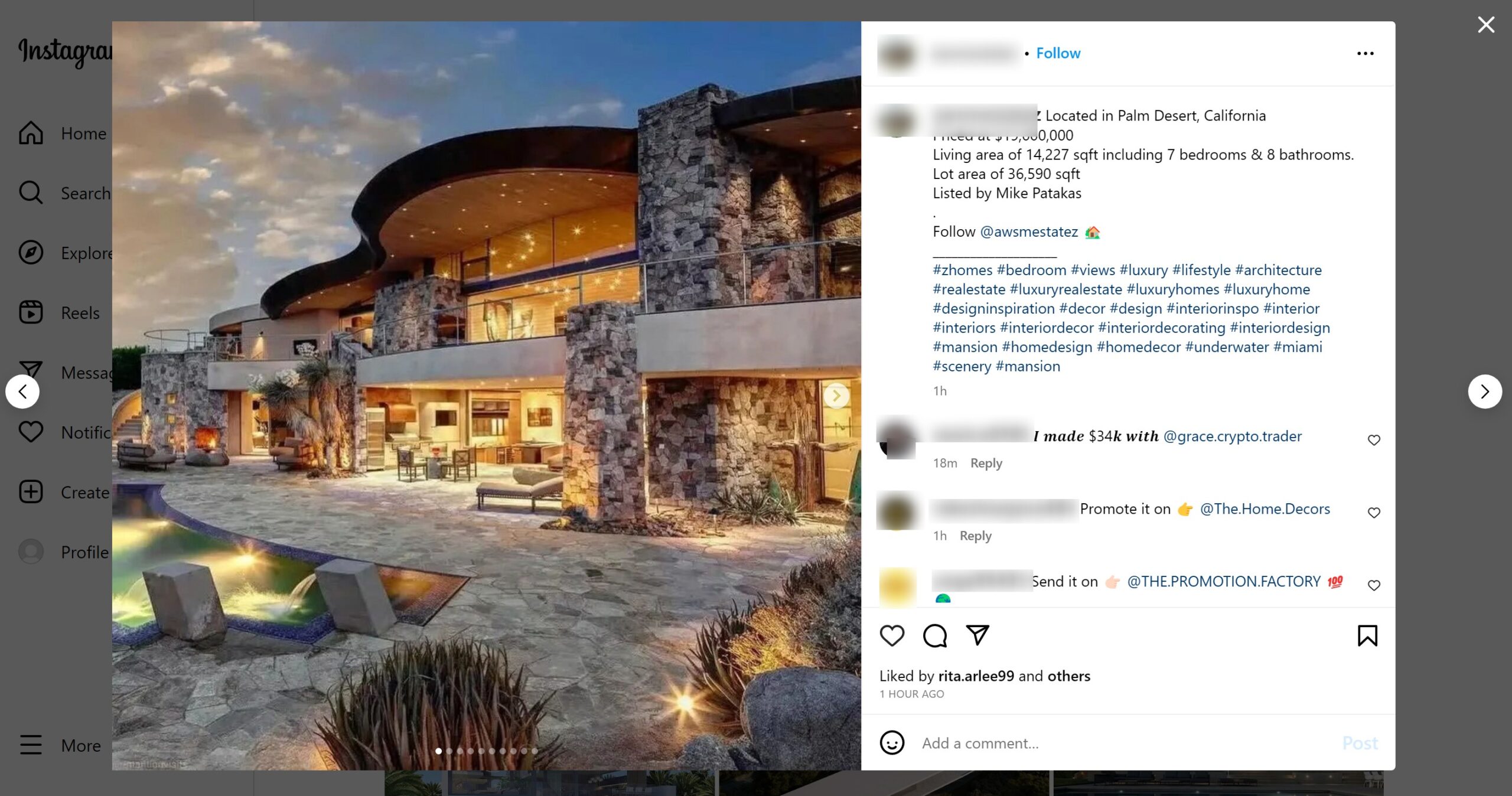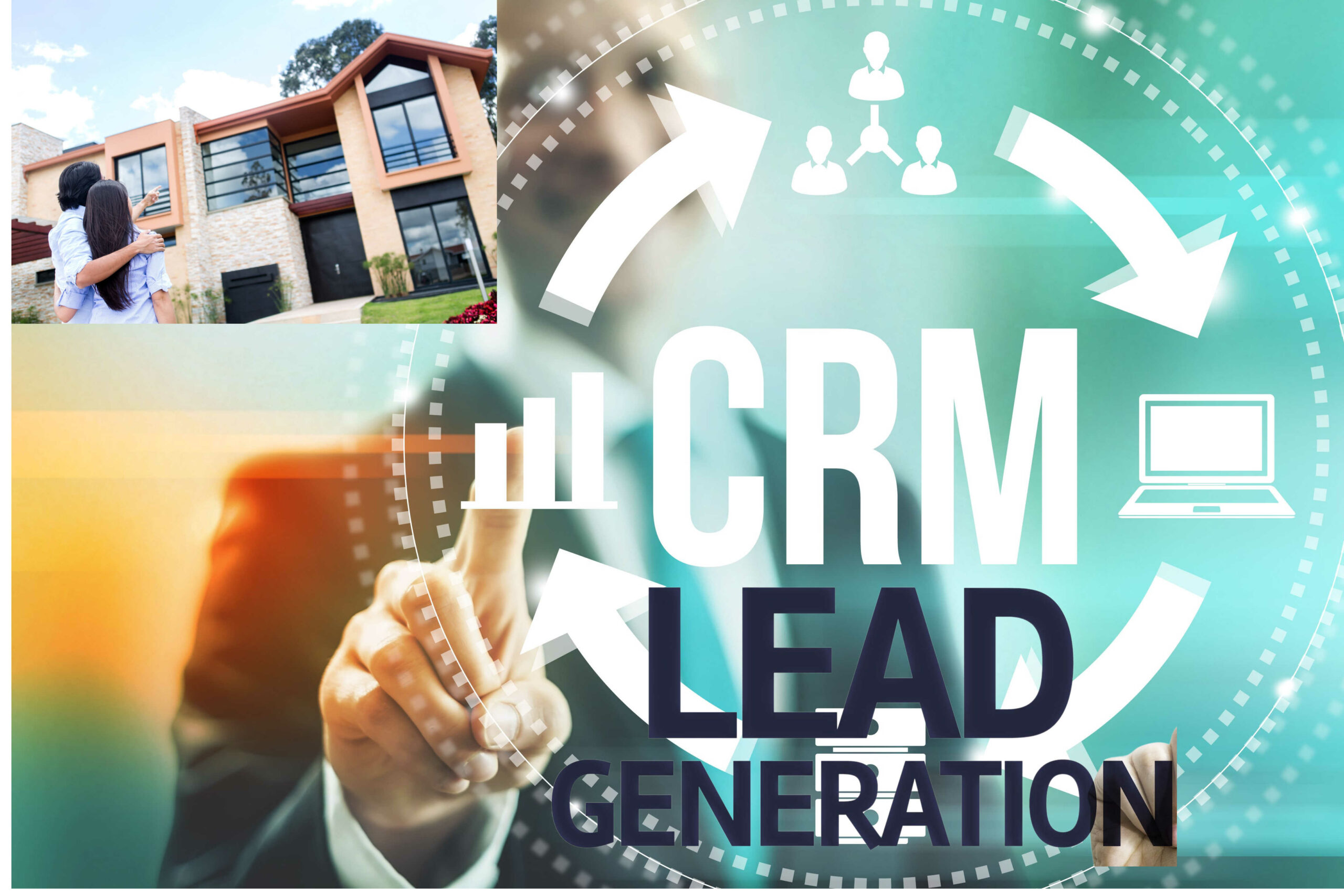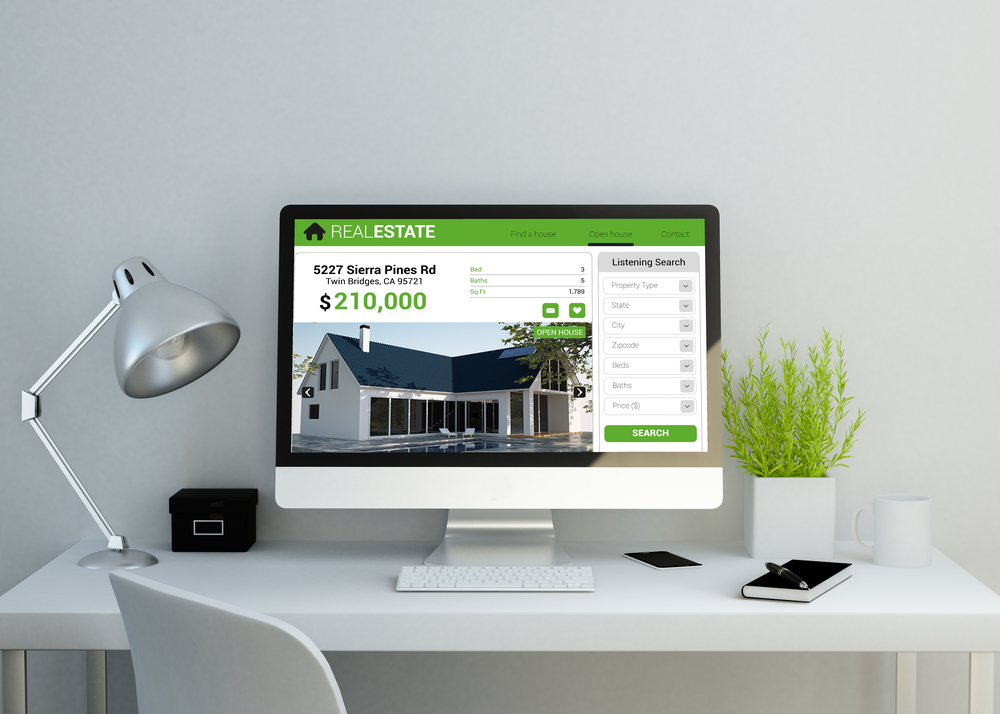In the highly competitive real estate industry, generating quality leads is crucial for success. A robust real estate CRM system can play a pivotal role in streamlining lead generation efforts and maximizing conversion rates.
In this article, we will explore ten proven strategies to generate quality leads using real estate CRM, helping you optimize your lead generation and achieve better results.
1. Know Your Target Audience and Their Buyer Personas

Before diving into lead generation strategies, it’s essential to have a clear understanding of your target audience and develop buyer personas.
By identifying the demographics, interests, and pain points of your ideal customers, you can tailor your lead generation efforts to attract and engage the right prospects.
To understand your target audience, conduct market research and analyze your existing customer base. Gather data on age groups, income levels, preferences, and motivations.
With this information, create detailed buyer personas that represent your ideal clients. These personas should encompass their demographics, preferences, goals, challenges, and behaviors.
Understanding your target audience and buyer personas will guide your lead generation strategies and ensure that you focus your efforts on reaching the right prospects.
To understand your target audience and develop buyer personas, consider the following elements:
| Element | Description |
|---|---|
| Demographics | Age, gender, location, income level, occupation |
| Interests | Hobbies, lifestyle preferences, recreational activities |
| Pain Points | Challenges or problems they face related to real estate |
| Goals | Their objectives and aspirations in the real estate market |
| Behavior | Online habits, preferred communication channels, decision-making process |
Integrating a Customer Relationship Management (CRM) system can greatly assist in this process.
A CRM system offers various features and tools that can help you organize, segment, and analyze your leads based on demographics, interests, and behaviors.
Here’s how you can leverage your CRM system to understand your target audience and develop buyer personas:
Utilize contact and lead management features: A CRM system enables you to store and manage customer and lead data in a centralized database. With contact and lead management features, you can organize your leads based on various criteria such as age, gender, location, income level, and occupation. By segmenting your leads, you can easily identify and target specific groups within your target audience.
Capture important information within your CRM: When interacting with leads, your CRM system allows you to capture important information directly within the platform. This includes demographics, preferences, and interactions with leads. By recording these details, you can build a comprehensive profile for each lead and gain valuable insights into their interests, pain points, and goals related to real estate.
Leverage CRM data analysis and reporting tools: One of the major advantages of a CRM system is its data analysis and reporting capabilities. By using these tools, you can extract meaningful insights from your CRM data. Analyze patterns, trends, and correlations to understand the preferences and behaviors of your target audience. This information will help you refine your buyer personas and fine-tune your lead generation strategies accordingly.
Integrating your real estate CRM system into understanding your target audience and buyer personas allows for a seamless flow of information.
With a centralized database of customer information, you can easily access and update buyer personas based on new insights or changes in the market.
By aligning your lead generation efforts with the data and insights provided by your CRM system, you can create personalized and targeted campaigns that resonate with your ideal clients.
This approach increases the likelihood of attracting and engaging the right prospects, ultimately leading to more successful conversions and increased business growth.
The key is to regularly update and refine your buyer personas as you gather new data and insights.
This ensures that your lead generation strategies remain aligned with the evolving needs and preferences of your target audience.
2. Leveraging Social Media Platforms for Lead Generation

Social media platforms offer immense opportunities for real estate lead generation. Facebook, with its extensive user base and advanced targeting options, allows you to run highly targeted ads to potential homebuyers.
Create compelling ads that highlight unique selling points of your properties or promote informative content that resonates with your target audience.
Instagram, known for its visually-driven content, provides a great platform for showcasing property listings and engaging with prospects.
Share high-quality photos and videos of your properties, virtual tours, and behind-the-scenes content to captivate your audience. Use Instagram’s interactive features like Stories, Polls, and Q&A to foster engagement and interaction.
Here’s a quick summary on how to leverage social media platforms for lead generation.
| Strategy | Key Strategies |
|---|---|
| Facebook Ads | Highly targeted ads based on demographics, interests, and behaviors |
| Instagram Engagement | Compelling visual content, interactive features, fostering engagement |
| Social Listening | Monitoring conversations and engaging with interested users |
| Lead Capture Forms | Embedding forms or creating custom landing pages on social media |
| CRM Integration | Integrating social media lead generation with CRM for seamless management |
Here’s how you can leverage social media platforms and integrate them with your CRM for efficient lead capture and management:
1. Connect your CRM with social media platforms
Many CRM systems offer integrations with popular social media platforms such as Facebook and Instagram. By connecting your CRM with these platforms, you can streamline the lead generation process. This integration allows you to capture leads directly from social media ads or lead forms and ensures that the data flows seamlessly into your CRM database.
2. Sync lead information with your CRM
When leads submit their information through social media lead forms or custom landing pages, it’s important to automatically sync that data with your CRM. This eliminates manual data entry and ensures that all lead information is captured accurately and promptly. With synchronized data, you can have a centralized view of all leads and their interactions across different channels.
3. Utilize CRM automation features
Take advantage of the automation features in your CRM to trigger follow-up actions or nurture campaigns based on social media interactions. For example, if a lead engages with a specific post or ad on social media, you can set up automation rules in your CRM to send them personalized follow-up emails or notifications. This helps you nurture leads and move them further along the sales funnel.
4. Social listening and engagement
Monitor conversations and engage with interested users on social media platforms. Keep an eye on relevant hashtags, mentions, or comments related to real estate. Respond promptly to inquiries or comments to establish a positive impression and build relationships with potential leads. Engaging with prospects through social media not only helps generate leads but also enhances your brand’s credibility and reputation.
5. Track social media interactions in your CRM
Ensure that your CRM system captures and tracks social media interactions for each lead. This includes their engagement with your social media posts, comments, direct messages, or any other relevant interactions. By having this information within your CRM, you can gain deeper insights into each lead’s preferences, interests, and behaviors, enabling you to tailor your communication and follow-up strategies accordingly.
3. Optimizing Search Engine Marketing (SEM) for Lead Capture With Real Estate CRM

Effective search engine marketing (SEM) techniques can drive targeted traffic to your real estate website and capture leads.
Implementing search engine optimization (SEO) best practices helps your website rank higher in search engine results, increasing its visibility to potential leads.
Conduct thorough keyword research to identify the search terms and phrases commonly used by your target audience when looking for real estate information or properties.
Optimize your website’s meta tags, headings, content, and URL structures to align with these keywords.
Create informative and engaging content on your website, such as blog posts, articles, and guides, that address common questions and concerns of your target audience.
Ensure that your content is optimized for relevant keywords and provides valuable information to attract organic traffic and capture leads.
In addition to SEO, running Google Ads campaigns targeted at relevant keywords can generate immediate traffic and capture leads actively searching for properties.
Craft compelling ad copy that highlights unique selling points, include relevant keywords, and use ad extensions to provide additional information or options for lead capture.
| Strategy | Actions |
|---|---|
| Keyword Research | Identifying relevant keywords to target in your content and ad campaigns |
| On-Page Optimization | Optimizing meta tags, headings, URLs, and content with targeted keywords |
| Content Creation | Developing high-quality and informative content that addresses the needs of your target audience |
| Google Ads Campaigns | Running targeted campaigns on Google Ads to capture leads actively searching for real estate properties |
| Landing Page Optimization | Designing landing pages with compelling copy, clear CTAs, and lead capture forms |
| Analytics and Tracking | Utilizing analytics tools to monitor the performance of your SEM campaigns and track lead conversions |
By tracking leads from their initial search or ad click to their conversion within the CRM, you gain valuable insights into the effectiveness of your SEM campaigns and can nurture leads more effectively.
To integrate your CRM system into optimizing SEM for lead capture:
- Use CRM integration with website analytics tools to track and analyze lead sources and conversions driven by SEM efforts.
- Set up lead capture forms or landing pages with CRM integration, ensuring that lead data is captured directly into your CRM database.
- Leverage CRM automation features to trigger personalized follow-up emails or notifications for leads captured through SEM channels.
4. Real Estate CRM and Content Marketing Strategies to Attract and Engage Leads
Content marketing is an effective way to provide value to your target audience while establishing your expertise in the real estate industry.
By creating informative blog posts, articles, and video content, you can attract and engage potential leads.
Develop a content strategy that focuses on addressing the pain points, challenges, and interests of your target audience.
Start by conducting keyword research to identify topics that align with your target audience’s search queries. This will help you create content that ranks well in search engine results and attracts organic traffic.
For example, if you specialize in luxury beachfront properties, you might create content around topics like “Top Tips for Buying a Luxury Beachfront Home” or “The Ultimate Guide to Investing in Beachfront Real Estate.”

When creating content, aim to provide valuable information, insights, and actionable advice. Share your expertise on topics like market trends, financing options, home buying process, and neighborhood guides.
Use engaging storytelling techniques, visuals, and data to capture the reader’s attention and make your content more memorable.
Integrating your content marketing efforts with your CRM system allows for seamless lead capture and nurturing. Use lead capture forms strategically within your content to capture interested readers as leads.
This enables you to track their engagement and preferences, personalize follow-up communications, and guide them through the sales funnel.
Consider the following strategies to successfully implement content marketing strategies for your real estate business
| Strategy | Implementation |
|---|---|
| Keyword Research | Identify target keywords and incorporate them into your content to improve search engine visibility and attract organic traffic. |
| Blogging | Create informative and engaging blog posts that address common questions, provide insights, and showcase your expertise in the real estate industry. |
| Video Marketing | Produce high-quality videos, such as property tours, market updates, or educational content, to engage and inform your audience. |
| Visual Content | Utilize visually appealing elements like infographics, images, and interactive content to capture attention and convey information effectively. |
| Guest Blogging | Contribute guest posts to reputable industry websites and publications to expand your reach and establish authority in the real estate field. |
| Lead Magnets | Offer valuable resources like ebooks, guides, or checklists in exchange for lead information, capturing their contact details for further nurturing. |
| CRM Integration | Integrate lead capture forms and landing pages with your CRM system to ensure seamless lead management and follow-up. |
Integrating your real estate CRM system into your content marketing strategies involves:
- Embedding lead capture forms or CRM-integrated landing pages within your content to capture lead information directly into your CRM.
- Utilizing CRM segmentation to categorize leads based on their engagement with specific content pieces.
- Leveraging CRM automation to deliver personalized content recommendations or follow-up messages based on lead content preferences.
By integrating your CRM system with your content marketing efforts, you can capture and nurture leads effectively while gaining valuable insights into their content engagement.

5. The Role of CRM and Email Marketing in Real Estate Lead Generation
Email marketing remains a powerful tool for lead generation and nurturing.
Building an email list within your CRM system and sending personalized, targeted emails allows you to stay top-of-mind with leads and provide them with valuable information.
To build an email list, offer lead magnets such as ebooks, checklists, or exclusive market reports that are relevant to your target audience.
Promote these lead magnets through your website, social media channels, and other marketing channels to encourage sign-ups.
Segment your email list based on various criteria such as lead source, behavior, or demographics. This segmentation allows you to send targeted emails tailored to specific segments.
For example, you might send a series of emails to first-time homebuyers that guide them through the home buying process, while sending a separate series to investors that focuses on property investment strategies.
Implementing automated email drip campaigns ensures consistent communication with leads. Set up a series of automated emails that deliver valuable content, property recommendations, and personalized offers over a specified period.
This automation saves time, nurtures leads on autopilot, and increases the chances of conversion.
Integrate your CRM system with email marketing platforms to streamline lead management and ensure seamless data syncing.
This integration enables you to track email engagement, monitor open and click-through rates, and analyze the effectiveness of your email campaigns.
Use this data to refine your email strategies, improve personalization, and optimize lead nurturing.
| Strategy | Implementation |
|---|---|
| Segmenting Leads | Divide your leads into distinct segments based on demographics, behavior, or interests. This allows you to tailor your email content and offers to each specific segment. |
| Personalization | Use personalization tokens to address each lead by name and customize email content based on their preferences, property interests, or stage in the buying process. |
| Automated Drip Campaigns | Set up automated email sequences, also known as drip campaigns, to deliver a series of targeted emails over time. This helps nurture leads, build trust, and encourage conversion. |
| Valuable Content | Provide relevant and valuable content in your emails, such as market updates, buying or selling tips, neighborhood guides, or exclusive property listings. This establishes your expertise and keeps leads engaged. |
| Call-to-Action (CTA) | Include clear and compelling CTAs in your emails to encourage leads to take the desired action, whether it’s scheduling a viewing, requesting more information, or downloading a resource. |
| A/B Testing | Conduct A/B tests on subject lines, email designs, CTAs, or content to determine the most effective elements for improving open rates, click-through rates, and conversions. |
Integrating your real estate CRM system with email marketing allows for seamless lead capture and nurturing:
- Connect your CRM system with an email marketing platform to synchronize lead information, email engagement data, and campaign results.
- Use CRM segmentation and lead behavior tracking to personalize email content based on lead preferences, property interests, or stage in the buying process.
- Utilize CRM automation features to trigger email drip campaigns, follow-ups, or personalized offers based on lead actions or milestones.
By integrating your CRM system with email marketing, you can streamline lead management, track email engagement, and deliver targeted and personalized email communications to nurture leads effectively.

6. Utilizing Lead Capture Forms and Landing Pages on Your Website
Well-designed lead capture forms and landing pages on your website are critical for converting website visitors into leads.
Optimizing form fields, reducing friction, and ensuring a seamless user experience can significantly improve form submission rates.
Design your lead capture forms to be concise and user-friendly. Minimize the number of required fields to reduce friction and make it easier for leads to submit their information.
Only ask for essential information at this stage, such as name, email address, and phone number.
Consider the placement and visibility of your lead capture forms on your website. Strategically place them on high-traffic pages, such as property listings or blog posts.
Use attention-grabbing headlines and persuasive copy to entice visitors to fill out the form.
In addition to optimizing lead capture forms, it’s crucial to create compelling landing pages that drive conversions.
A landing page is a standalone web page designed specifically for lead generation. It should have a clear and concise message that aligns with the visitor’s intent and provides them with a compelling reason to take action.
When creating landing pages, consider the following best practices:
- Headline and Subheadings: Craft attention-grabbing headlines and subheadings that convey the value proposition of your offer and entice visitors to stay on the page.
- Compelling Copy: Write persuasive copy that clearly communicates the benefits of your offer and addresses the pain points of your target audience. Keep the text concise, scannable, and easy to read.
- Engaging Visuals: Use high-quality images, videos, and graphics to enhance the visual appeal of your landing page. Visual content can help showcase properties, highlight key features, and evoke emotions.
- Clear Call-to-Action (CTA): Place a prominent and highly visible CTA button on your landing page that clearly states the desired action, such as “Download Now” or “Schedule a Viewing.” Use contrasting colors to make the CTA button stand out.
- Social Proof: Incorporate testimonials, reviews, or success stories from satisfied clients to build trust and credibility. Including social proof helps alleviate any doubts or reservations potential leads may have.
- Trust Indicators: Display trust badges, security seals, or affiliations with reputable organizations to instill confidence in visitors and reassure them that their information is secure.
- Mobile Responsiveness: Ensure that your landing pages are mobile-friendly and responsive. With the increasing number of users accessing the internet through mobile devices, it’s essential to provide a seamless user experience across all devices.
Here are some key considerations for optimizing their effectiveness:
| Consideration | Description |
|---|---|
| Form Design | Keep your forms clean, visually appealing, and user-friendly. Minimize the number of required fields to reduce friction and make it easier for leads to submit their information. |
| Form Placement | Strategically place lead capture forms on high-traffic pages of your website, such as property listings, blog posts, or dedicated landing pages. |
| Compelling Copy | Craft persuasive headlines and form instructions that clearly communicate the benefits of filling out the form and the value they will receive in return. |
| Lead Magnet Offer | Provide an enticing lead magnet, such as an ebook, market report, or exclusive content, as an incentive for leads to share their information. |
| Landing Page Optimization | Design compelling landing pages with engaging visuals, persuasive copy, and clear calls-to-action (CTAs) that direct leads to fill out the form. |
| Mobile Responsiveness | Ensure that your forms and landing pages are mobile-friendly and responsive, as an increasing number of users access websites from mobile devices. |
| CRM Integration | Integrate your lead capture forms and landing pages with your CRM system to capture lead information directly into the platform for efficient lead management. |
By implementing these strategies, you can optimize your lead capture forms and landing pages to maximize conversions and capture high-quality leads.
Integrating your lead capture forms and landing pages with your real estate CRM system is vital for efficient lead management. When a visitor submits their information on a form or landing page, the data is automatically captured and stored in your CRM.
This integration allows you to track lead sources, monitor conversion rates, and nurture leads effectively within the CRM platform.
Integrating lead capture forms and landing pages with your real estate CRM system involves:
- Embedding CRM-integrated lead capture forms on your website or landing pages to capture lead information directly into your CRM database.
- Utilizing CRM automation to trigger personalized follow-up actions or nurture campaigns based on form submissions.
- Tracking and analyzing form submissions and conversions within your CRM system to measure the effectiveness of your lead capture efforts and make data-driven adjustments.
By integrating lead capture forms and landing pages with your CRM system, you ensure that all lead information is captured and stored in a centralized location. This allows for efficient lead management, easy tracking of conversions, and seamless follow-up activities.

7. The Power of Referrals and Testimonials in Generating Leads
Word-of-mouth marketing is a powerful lead generation strategy in the real estate industry.
Encouraging satisfied clients to refer their friends and family to your services can generate high-quality leads. Additionally, showcasing positive testimonials and reviews on your website and within your CRM system helps build trust and credibility, attracting more potential leads.
To leverage the power of referrals, consider implementing the following strategies:
- Delight Your Clients: Provide exceptional service to your clients and exceed their expectations. Happy clients are more likely to refer you to others.
- Ask for Referrals: Proactively ask satisfied clients if they know anyone who might be interested in buying or selling a property. Personalized requests can yield better results.
- Incentivize Referrals: Offer referral incentives such as discounts on commissions, gift cards, or exclusive access to new property listings. This can motivate your clients to actively refer you to their network.
- Implement a Referral Program: Develop a formal referral program where you provide a structure for clients to refer others and receive rewards in return. This program can be managed within your CRM system, allowing you to track and manage referrals efficiently.
Testimonials and reviews are valuable social proof that can influence potential leads’ decision-making process.
Collect testimonials from satisfied clients and display them prominently on your website, landing pages, and property listings. Integrate these testimonials within your CRM system to have a centralized repository of client feedback and success stories.
Encourage clients to leave reviews on popular review platforms like Google, Yelp, or real estate-specific websites. Positive online reviews can boost your reputation and attract leads who are researching agents or agencies.
Referrals and testimonials can be highly influential in generating quality leads. Here’s how you can leverage their power:
| Strategy | Implementation |
|---|---|
| Delighting Clients | Provide exceptional service to your clients to increase the likelihood of them referring you to others. Exceed their expectations and consistently go above and beyond. |
| Requesting Referrals | Proactively ask satisfied clients if they know anyone who might be interested in buying or selling a property. Personalized requests can yield better results. |
| Referral Incentives | Offer referral incentives such as discounts on commissions, gift cards, or exclusive access to new property listings to motivate clients to actively refer you to their network. |
| Referral Programs | Develop a formal referral program where clients are rewarded for referring leads. Provide a structure for clients to submit referrals and track their progress. |
| Showcasing Testimonials | Collect positive testimonials and showcase them on your website, landing pages, and within your CRM system. Highlight success stories and experiences from satisfied clients. |
| Online Reviews | Encourage clients to leave reviews on popular platforms like Google, Yelp, or real estate-specific websites. Positive online reviews can boost your reputation and attract leads who are researching agents or agencies. |
| CRM Integration | Integrate your CRM system with review platforms and referral tracking tools to streamline the collection of testimonials and track the success of referral programs. |
By implementing a comprehensive referral and testimonial strategy, you can tap into the power of word-of-mouth marketing and build trust with potential leads.
Integrating your real estate CRM system into your referral and testimonial strategies involves:
- Using your CRM system to track and manage client referrals. Assign referral sources to leads within your CRM database for accurate tracking and measurement.
- Incorporating a referral tracking system within your CRM to monitor the progress and success of referral programs.
- Storing and organizing client testimonials and reviews within your CRM to showcase social proof and build credibility.
By integrating referrals and testimonials into your CRM system, you can effectively manage and track the impact of referral programs, leverage positive reviews, and strengthen your lead generation efforts.

8. Tracking and Analyzing Lead Generation Performance
To continuously improve your lead generation efforts, it’s essential to track and analyze key metrics.
Your CRM system provides valuable insights into lead sources, conversion rates, and engagement levels. By leveraging these analytics, you can identify which strategies are most effective and make data-driven adjustments to optimize your lead generation process.
Within your CRM system, monitor the following metrics:
- Lead Sources: Identify the channels or campaigns that are generating the most leads. Determine which sources provide the highest-quality leads and allocate resources accordingly.
- Conversion Rates: Track the percentage of leads that convert into clients or take desired actions. Analyze conversion rates for different lead sources, campaigns, or segments to identify areas for improvement.
- Lead Engagement: Monitor the level of engagement and interaction with your leads. Track email open rates, click-through rates, website visits, and social media engagement. This data helps you understand lead behavior and preferences.
- Return on Investment (ROI): Evaluate the effectiveness of your lead generation strategies by analyzing the ROI for each campaign or channel. Calculate the cost per lead and the cost per conversion to determine the profitability of your efforts.
By analyzing these metrics, you can gain valuable insights into the performance of your lead generation strategies. Identify patterns, trends, and areas for improvement.
Experiment with different approaches, test new channels, and make data-driven adjustments to optimize your lead generation process.
Here is a summary of metrics to monitor:
| Metric | Action |
|---|---|
| Lead Sources | Identify the channels or campaigns that are generating the most leads. Determine which sources provide the highest-quality leads and allocate resources accordingly. |
| Conversion Rates | Track the percentage of leads that convert into clients or take desired actions, such as scheduling a viewing or submitting an inquiry. Analyze conversion rates for different lead sources, campaigns, or segments. |
| Lead Engagement | Monitor the level of engagement and interaction with your leads. Track email open rates, click-through rates, website visits, and social media engagement. |
| Return on Investment (ROI) | Evaluate the effectiveness of your lead generation strategies by analyzing the ROI for each campaign or channel. Calculate the cost per lead and the cost per conversion to determine the profitability of your efforts. |
| Website Analytics | Utilize website analytics tools to track traffic sources, user behavior, and conversion funnels. Identify areas for improvement in user experience and optimize website performance. |
| A/B Testing Results | Conduct A/B tests on different elements of your lead generation campaigns, such as landing pages, forms, CTAs, or email subject lines. Analyze the results to determine the most effective variations. |
| CRM Analytics | Leverage the analytics capabilities of your CRM system to track lead sources, monitor conversion rates, and measure the effectiveness of your marketing campaigns. |
By tracking these metrics and analyzing the data, you can gain valuable insights into the performance of your lead generation strategies and make data-driven adjustments to optimize your efforts.
Integrating your CRM system with tracking and analysis allows for comprehensive lead generation performance measurement:
- Utilize CRM analytics and reporting features to track and analyze lead sources, conversion rates, and overall campaign performance.
- Integrate your CRM system with website analytics tools to gather data on lead behavior, website traffic, and conversion funnels.
- Use CRM reporting capabilities to generate customized reports and dashboards that provide insights into the effectiveness of your lead generation strategies.
By integrating tracking and analysis with your CRM system, you gain a holistic view of your lead generation performance, allowing you to identify areas for improvement, make data-driven decisions, and optimize your strategies for better results.

9. Implementing Targeted Marketing Campaigns within a Real Estate CRM
Segmenting your leads based on their interests, demographics, and behavior allows for targeted marketing campaigns.
Within your CRM system, you can create personalized email sequences, delivering relevant content and offers to specific lead segments. This tailored approach increases engagement and conversion rates, resulting in higher-quality leads.
Start by segmenting your leads based on common criteria such as location, budget, property preferences, or stage in the buying process.
Create dynamic lists within your CRM that automatically update as leads meet specific criteria. For example, you could have a segment for first-time homebuyers, luxury property seekers, or investors.
Once you have segmented your leads, develop targeted marketing campaigns that address the specific needs and interests of each segment.
Personalize your messaging, content, and offers to resonate with each group. For example, a first-time homebuyer segment might receive emails focused on understanding the home buying process, while an investor segment might receive information about high-yield investment properties.
Utilize the automation capabilities of your CRM to implement these targeted marketing campaigns. Set up drip email sequences that automatically deliver relevant content and offers based on the lead’s segment and behavior.
Personalize the emails with the lead’s name, property preferences, or other relevant details to enhance engagement and build a stronger connection.
By implementing targeted marketing campaigns within your CRM, you can nurture leads more effectively, provide them with the information they need, and increase the likelihood of conversion.
Consider the following strategies:
| Strategy | Description |
|---|---|
| Lead Segmentation | Divide your leads into distinct segments based on demographics, behaviors, interests, or buying preferences. |
| Personalized Messaging | Customize your marketing messages and content to resonate with each lead segment. Address their specific pain points, preferences, and motivations. |
| Email Campaigns | Create targeted email campaigns that deliver relevant content and offers to specific lead segments. Personalize the subject lines, body content, and CTAs for each segment. |
| Dynamic Website Content | Use dynamic content on your website to deliver personalized experiences based on the lead’s segment. Show tailored property listings, content recommendations, or localized information. |
| Social Media Ads | Run targeted social media ad campaigns that reach specific lead segments based on their demographics, interests, or behaviors. Craft ad content that speaks directly to each segment. |
| Direct Mail Campaigns | Implement direct mail campaigns that deliver personalized postcards, brochures, or promotional materials to specific lead segments. |
| CRM Automation | Utilize automation features within your CRM system to deliver personalized content and offers based on the lead’s segment and behavior. |
By implementing targeted marketing campaigns within your real estate CRM system, you can deliver more relevant and personalized experiences to your leads, increasing engagement and conversion rates.
Integrating targeted marketing campaigns with your real estate CRM system involves:
- Utilizing CRM segmentation to categorize leads into specific target segments based on demographics, behaviors, or preferences.
- Creating personalized marketing messages and content for each segment using CRM data and insights.
- Leveraging CRM automation to trigger targeted marketing campaigns and deliver tailored content to specific segments.
By integrating targeted marketing campaigns with your CRM system, you can effectively deliver personalized messages, engage leads at a deeper level, and increase the chances of conversion.

10. Implementing Personalized Lead Nurturing Strategies
Personalization is key to successful lead nurturing. Your CRM system enables you to track lead behavior, preferences, and interactions, allowing you to tailor your communication accordingly.
By delivering personalized touchpoints such as phone calls, handwritten notes, or small gifts, you can foster stronger relationships with leads and increase the chances of conversion.
Personalized lead nurturing involves understanding your leads’ needs, preferences, and stage in the buying process.
Use the data captured in your CRM system to gain insights into each lead’s interactions, such as website visits, email opens, and property inquiries.
Based on this information, develop personalized lead nurturing strategies. Here are some ideas to consider:
- Personalized Phone Calls: Reach out to leads with personalized phone calls to establish a direct connection and build rapport. Use the information in your CRM to tailor your conversation and offer assistance based on their specific needs.
- Handwritten Notes: Send handwritten notes to leads, expressing your appreciation for their interest or thanking them for attending an open house. This personal touch can make a lasting impression and differentiate you from competitors.
- Customized Property Recommendations: Utilize the data in your CRM to recommend properties that align with the lead’s preferences and budget. Provide personalized insights and highlight key features that match their specific requirements.
- Exclusive Offers: Offer exclusive incentives or discounts to leads based on their interests and preferences. This personalized approach can motivate leads to take action and move forward in the buying process.
Integrating your lead nurturing strategies with your CRM system ensures that all communication and interactions are logged and tracked. This allows for a unified view of each lead’s journey and enables you to provide consistent and personalized experiences.
Personalization is key to successful lead nurturing. Here are strategies for implementing personalized lead nurturing:
| Strategy | Description |
|---|---|
| Lead Behavior Tracking | Track lead behavior, interactions, and preferences within your CRM system. Understand their interests, property preferences, and engagement levels. |
| Personalized Email Sequences | Set up automated email sequences that deliver personalized content and offers based on the lead’s behavior and preferences. Customize the messaging to align with their stage in the buying process. |
| Phone Calls and Follow-ups | Make personalized phone calls to leads to establish a direct connection and build rapport. Follow up with personalized emails or messages to address their specific needs or inquiries. |
| Handwritten Notes or Gifts | Send personalized handwritten notes or small gifts to leads as a way to stand out and foster a personal connection. |
| Customized Property Recommendations | Utilize the data in your CRM system to recommend properties that align with the lead’s preferences, budget, and location. Provide personalized insights and highlight key features. |
| Timely and Relevant Communication | Deliver timely and relevant communications to leads, such as updates on new listings, market trends, or local events that align with their interests. |
| CRM Automation | Utilize automation features within your CRM system to trigger personalized communications based on specific lead actions or milestones. |
By implementing personalized lead nurturing strategies within your real estate CRM system, you can build stronger relationships with leads, increase engagement, and improve the likelihood of conversion.
Integrating personalized lead nurturing strategies into your CRM system involves:
- Utilizing CRM lead behavior tracking to understand individual lead preferences, interests, and engagement levels.
- Leveraging CRM automation to deliver personalized content, recommendations, and follow-up messages based on lead behaviors.
- Utilizing CRM data and insights to provide customized property recommendations and relevant information to nurture leads effectively.
Lead nurturing strategies with your CRM system create meaningful interactions, build stronger relationships with leads, and guide them through the sales funnel.
Effective lead generation is the backbone of a successful real estate business.
By leveraging the power of a real estate CRM system and implementing the ten strategies outlined in this article, you can optimize your lead generation efforts, attract high-quality leads, and increase your conversion rates.
Overall, consistency, personalization, and data-driven adjustments are key to achieving long-term success in real estate lead generation.
















